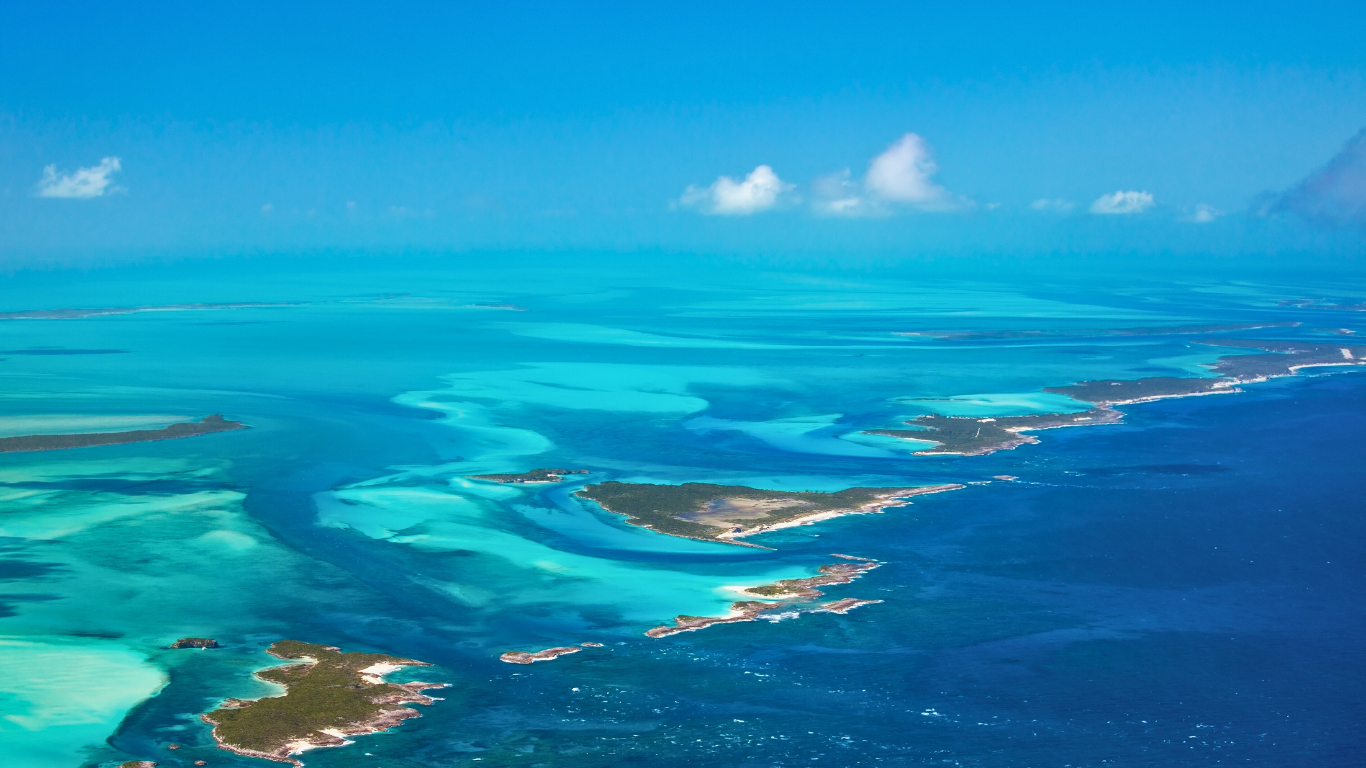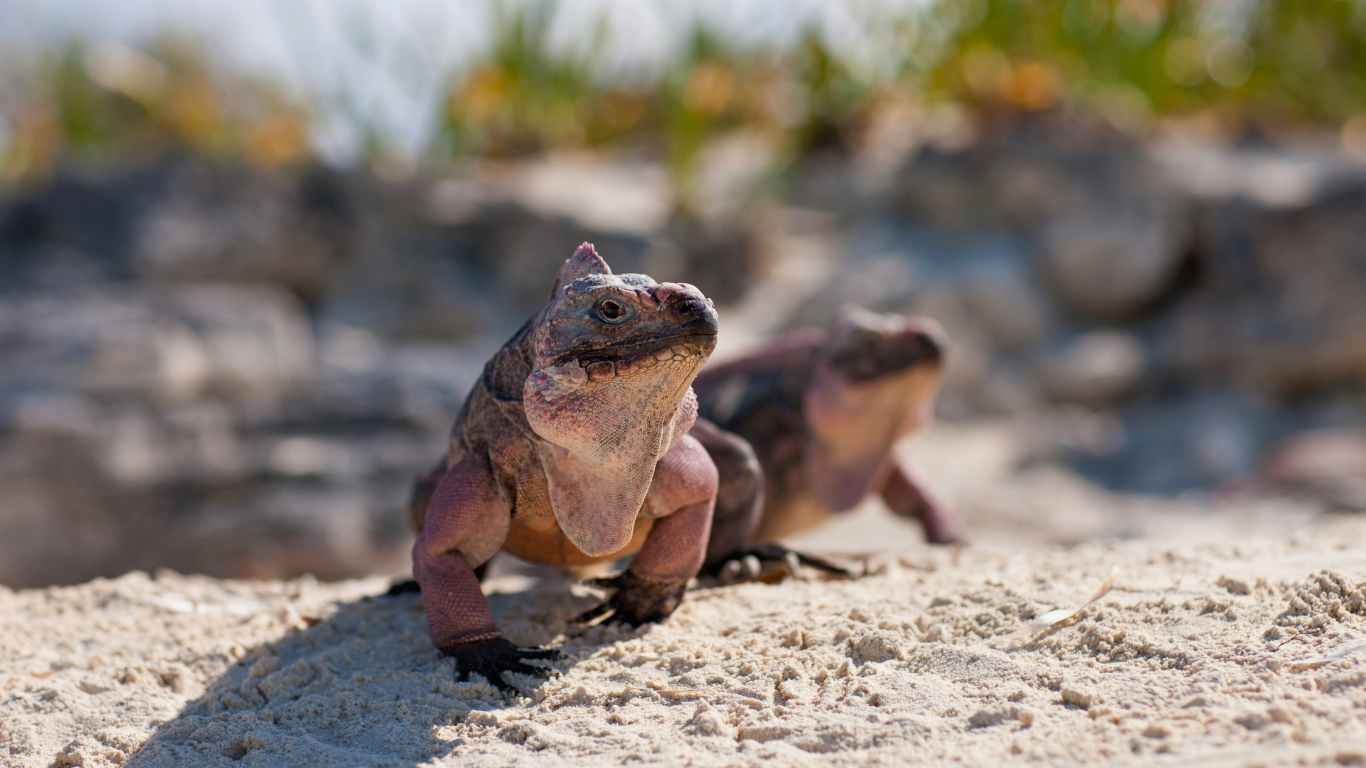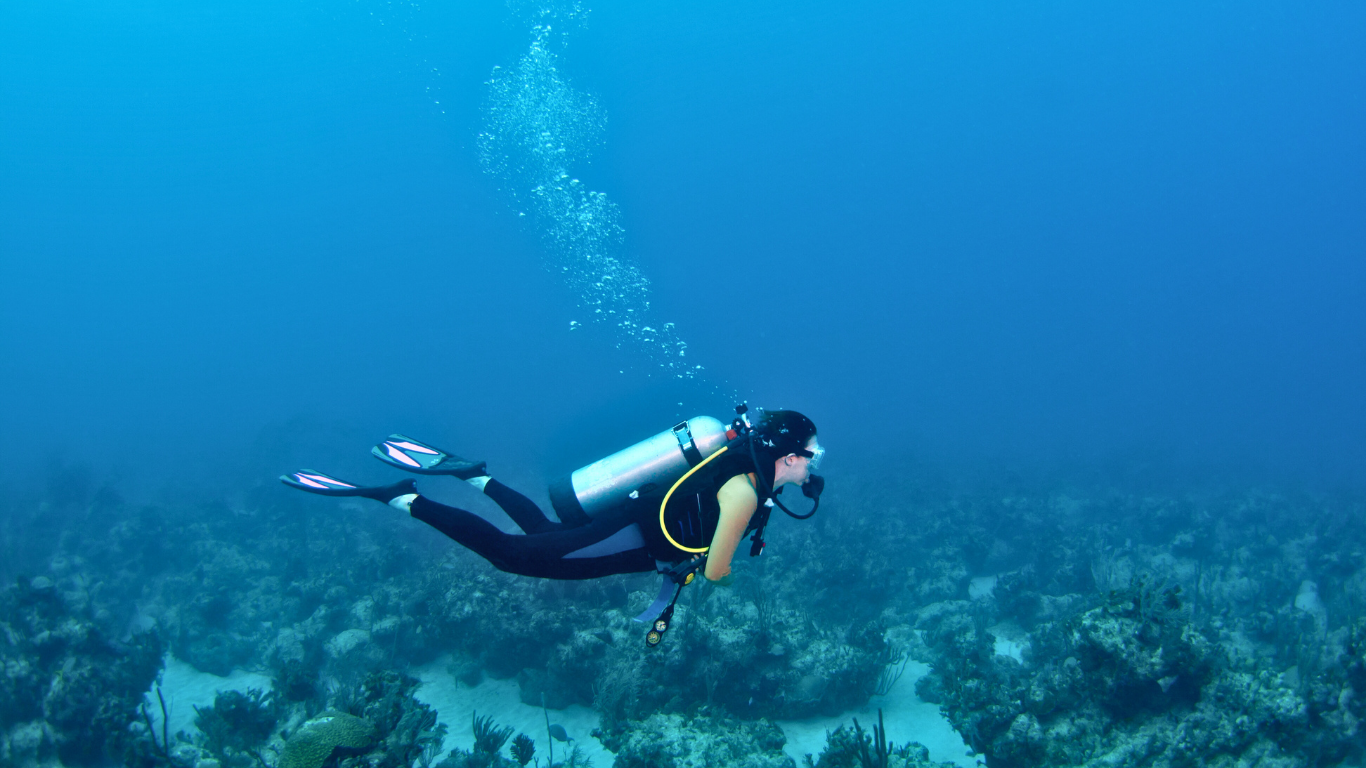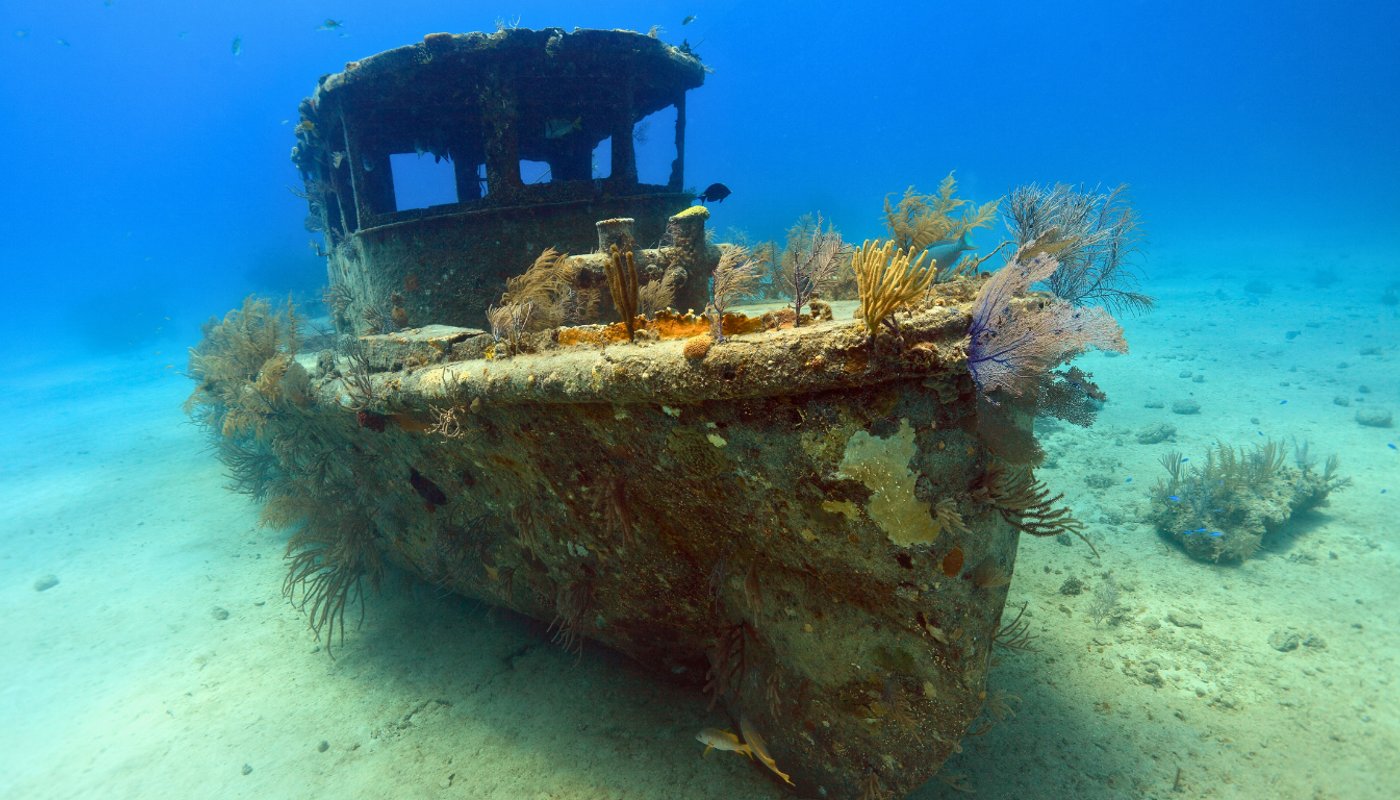8 Fun Facts About the Bahamas That Will Surprise You
Welcome to the Bahamas— now forget everything you thought you knew
The Bahamas isn’t just a pretty postcard with clear blue water and pastel-colored houses. It’s a living, breathing history book disguised as a tropical paradise — a place where pirates once ruled, pigs learned to swim, and ancient civilizations thrived long before cruise ships clogged the horizon.
You’ve seen the photos. Now let’s talk about the strange, ridiculous, and shockingly real stories behind them.
1. The Bahamas got its name because someone thought it looked shallow. And they were right.
Let’s start with the obvious: the name.
“Bahamas” is a play on the Spanish words baja mar, meaning “shallow sea.” And when you realize that 90% of the water surrounding these islands barely reaches shoulder height, it kind of makes sense.
This archipelago isn’t just one big island — it’s 700 islands and over 2,000 cays, scattered across waters so clear you can count starfish from the boat.
But don’t let the calm surface fool you.
Beneath those warm, turquoise shallows are underwater cave systems that haven’t been fully mapped.
The entire country sits on coral limestone platforms that barely rise above sea level — making it one of the flattest nations on Earth.
It’s a miracle the whole place hasn’t floated away.

2. Before Columbus showed up, the Bahamas were home to an advanced seafaring people you’ve probably never heard of.
Say hello to the Lucayans — the forgotten islanders of the Bahamas.
Long before Europeans stumbled in with ships, the Lucayan people had settled across the Bahamian islands, thriving off the sea and land. They fished, farmed, and built dugout canoes over 80 feet long, sailing between islands like it was no big deal.
They were:
Technologically advanced (seriously — their canoe-making skills were next-level).
Peaceful and communal.
Deeply connected to the ocean — with spiritual beliefs tied to caves, stars, and the tides.
By the time Columbus arrived in 1492 — landing on what is believed to be San Salvador Island — an estimated 40,000 Lucayans were living here.
Less than 30 years later, they were completely wiped out.
No survivors. No written records. Just bones, pottery shards, and oral histories.
To this day, the Lucayan story is rarely told. But if you’re looking for the real roots of the Bahamas — this is where it starts.
3. The pigs of Exuma aren’t native, but they are icons.
The fact that there are wild pigs swimming in crystal-clear Caribbean water is one of those things that sounds made up after two rum punches. But it’s real. And you can visit them.
The islands:
Big Major Cay (Pig Beach) – near Staniel Cay in the Exumas; the original and most famous pig island
Rose Island – just off the coast of Nassau; accessible via boat tours from Paradise Island
No Name Cay – in the Abacos, near Green Turtle Cay
Treasure Cay – in the Abacos; pigs are sometimes spotted here on organized tours
Harbour Island – some tours offer stops to see pigs on nearby beaches
Spanish Wells (Meeks Patch Island) – in Eleuthera; home to another group of swimming pigs
Long Island – a few tours claim pig encounters on nearby islets
Now, how they got there? That’s the juicy part.
Competing theories include:
A shipwreck where pigs swam ashore and survived (pigs = surprisingly great swimmers).
Farmers who released them intentionally, hoping they’d breed and serve as backup bacon.
Locals trying to spice up tourism and accidentally creating an Instagram goldmine.
Whatever the origin, the pigs adapted. They learned to:
Paddle out to boats in search of snacks.
Pose for selfies with sunburnt tourists.
Bite the occasional finger when people forget they’re still, you know, pigs.
These pigs have agents. They’ve appeared in music videos. There’s merchandise. There’s drama (some of them don’t get along).
It’s a weird cultural moment. And it’s very Bahamian.

4. Nassau was once run by actual pirates, and it was absolute chaos
If you thought pirate stories were just for Halloween or Disney rides, you’re going to love this.
Back in the early 1700s, Nassau was the unofficial capital of piracy in the Atlantic. We’re talking full-blown anarchy: no government, no law enforcement, just a bunch of sunburnt, drunk, treasure-hunting criminals living their best (worst?) lives.
Who was hanging out in Nassau back then?
Blackbeard, aka Edward Teach — the most feared pirate in history.
Calico Jack, the guy who invented the skull-and-crossbones flag.
Anne Bonny and Mary Read, two women who disguised themselves as men, joined pirate crews, and became legends.
For a few glorious, unhinged years, this was the Republic of Pirates — a rogue state where the only rule was “don’t get caught.”
Then came the British.
In 1718, the crown appointed Woodes Rogers as Royal Governor. He rolled into town, shut the party down, and offered pirates a deal:
Accept the King’s pardon and go straight.
Or die.
Most took the deal. Some didn’t. Blackbeard died shortly after.
Nassau became more civilized — but the pirate legacy still clings to the island like salt on your swim trunks.
You can visit the Pirates of Nassau Museum today, walk through full-scale ship replicas, and see just how close this place came to becoming the Caribbean’s answer to Vegas — 300 years too early.
5. There are 700 islands here. But only about 30 are actually inhabited.
The Bahamas is huge.
With 700 islands and over 2,000 cays, it covers 100,000 square miles of ocean — that’s bigger than all of New England combined. But here’s the kicker:
Only around 30 islands are regularly inhabited. The rest?
Uninhabited.
Undeveloped.
Basically just tropical castaway fantasies waiting for a drone and a tent.
What does that mean for travelers?
You can charter a boat and not see another soul for hours.
Some beaches don’t even have names — just GPS coordinates and seashells.
There are entire islands where the only residents are birds, iguanas, or goats.
It’s wild. It’s remote. And it’s the exact opposite of your crowded resort pool.
The best way to explore them? With a boat, of course. And the fun part? You get to choose which private charter best suits you here.

6. The Bahamas has underwater sinkholes so deep, scientists still don’t know what’s in them
Let’s talk about blue holes — no, not a weird mood or a bad cocktail, but one of the most mysterious natural features on Earth.
These things are vertical caves that sink deep into the ocean floor, often hundreds of feet down, with entrances that look like giant ink drops in the middle of turquoise shallows. And the Bahamas? It has more blue holes than anywhere else on the planet.
The most famous of them all?
Dean’s Blue Hole on Long Island. It plunges 663 feet straight down, making it one of the deepest known seawater sinkholes on Earth.
What’s inside? Well…
Zero light past 100 feet.
Almost no oxygen.
And weird bacteria that might just help us understand life on other planets.
Also, it’s the site of the World Free Diving Championships, where people dive into the void with nothing but a single breath and questionable decision-making skills.
No pressure.
7. Snorkeling in the Bahamas isn’t a tourist activity. It’s a full-blown national treasure.
Yes, the water looks Photoshopped. Yes, you can rent fins and a snorkel and call it a day.
But in the Bahamas, snorkeling is elite-level. Why? Because you’re floating over entire worlds.
Some of the best snorkeling spots include:
Thunderball Grotto (Exumas)
A sea cave made famous by James Bond films.
Swim through openings into a natural cathedral lit from above.
Schools of fish literally shimmer like disco lights. No exaggeration.
Andros Barrier Reef
The third-largest barrier reef in the world (yes, it’s bigger than Belize’s).
190 miles of coral, tunnels, drop-offs, and caverns.
Home to parrotfish, reef sharks, sea turtles, and the occasional mermaid rumor.
Rose Island Reef
Just a short boat ride from Nassau.
Shallow, beginner-friendly, and swarming with marine life.
You might spot eagle rays if you’re lucky. Or unlucky. (They’re huge.)
Here, snorkeling isn’t something you do instead of scuba diving. It’s something you do because the ocean is showing off. Seriously, where else can you swim with sharks and live to tell the tale?

8. The Bahamas has world-famous landmarks hiding in plain sight
When people think of “landmarks,” they picture monuments, towers, or some giant stone guy pointing at the sky. But in the Bahamas, landmarks are a little more… extraordinary. They’re historical, beautiful, and just strange enough to be memorable.
The Queen’s Staircase (Nassau)
Carved by hand from solid limestone in the late 1700s, this 66-step staircase was built by enslaved people as a hidden escape route from the Fort Fincastle complex. It’s now one of the most visited sites in Nassau — and a surprisingly sweaty climb.
The steps are named after Queen Victoria, who reigned during the time slavery was abolished in the British Empire.
It’s surrounded by cool, shaded stone walls and tropical plants — basically an ancient jungle gym.
Fort Charlotte
The largest fort in the Bahamas, built in the 1780s.
Features real cannons, secret dungeons, and fake moat drama.
Never actually saw battle. Which is kind of hilarious and totally on-brand.
The Pink Sand Beach (Harbour Island)
Yes, it’s actually pink. The color comes from microscopic coral organisms called foraminifera — which sounds like a pasta dish but is actually part of what makes this island internationally famous.
It’s so perfect it looks fake. But it’s not.
It’s nature, filtered by sunshine and saltwater and a little geological magic.
The Andros Blue Holes and Barrier Reef System
While technically still being evaluated for full inscription, these ecosystems are globally recognized for their:
Biodiversity (over 164 documented species).
Geological importance (millions of years in the making).
Cultural ties to Lucayan history and modern Bahamian identity.
Local scientists, environmentalists, and divers all work to protect these fragile zones. That means:
Limited tourism in sensitive areas.
Education programs for visitors.
And yes, regulations that make snorkeling here even more rewarding — because you know you’re seeing something the planet literally marked as rare.
Bonus Round: Even More Wild Bahamas Facts (Because Why Not?)
Still hungry for more weird-and-wonderful facts? Here are a few to throw in your group chat:
You can see Florida from the Bahamas — Bimini is only 50 miles from Miami. On a clear day, with a good drone and zero clouds? It’s there.
The national sport is sloop sailing — not baseball, not soccer. Every island has its own handcrafted sailboat team, and regattas are basically island-wide ragers with boats.
There’s a real Blue Lagoon — and it’s where Flipper the dolphin was filmed. The dolphin became more famous than half the cast.
Nassau has its own version of Mardi Gras called Junkanoo — think feathers, brass bands, glitter, cowbells, and street dancing so loud you’ll feel it in your ribcage.
The Bahamian $3 bill existed — It was discontinued, but it was real. Even had a nickname: “the dollar-and-a-half sandwich.”
So, Why Does Any of This Matter?
Because the Bahamas is so much more than sun and sand.
It’s:
A timeline of human survival and culture — from the Lucayans to modern Junkanoo dancers.
A natural wonderland where pigs swim, holes go to the center of the Earth, and coral glows.
A tropical playground where the oddest animals run the show
A living story, still unfolding, island by island.
And the next time someone says, “Isn’t that where cruise ships go?” you’ll have about 2,000 words of delightful retort.
Ready to see the weird, wild, and wonderful for yourself?
The Bahamas isn’t just palm trees and piña coladas (though it has great versions of both). It’s a place where history runs deep, pigs paddle past you, and ancient staircases lead to secret forts. Whether you’re into snorkeling shipwrecks, chasing pink-sand beaches, or standing on islands smaller than your hotel room, there’s no shortage of surprises.
And the best part? You don’t have to just read about it.
Check out Bahamas tours and start planning your own deep dive into the fun, the facts, and the unexpected.
Trust us — the real Bahamas is even better than the brochure.

